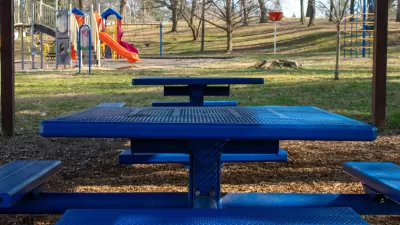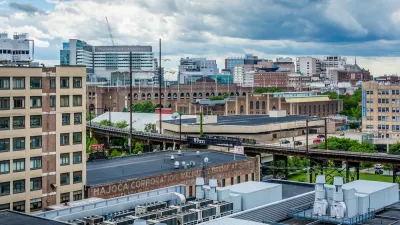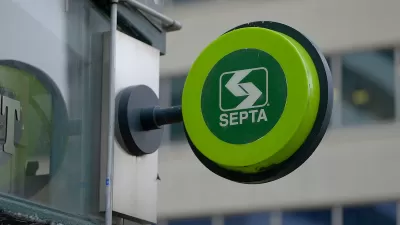As free-range children become an increasingly rare species, designers and psychologist are also questioning the effects of the sterile, innocuous playgrounds currently in fashion. How can play, and kids, get liberated again?
According to a new column by Philadelphia Inquirer Architecture Critic Inga Saffron, "psychologists and designers are starting to question the value of what they call 'the playground in a box,' the factory-made, cookie-cutter climbing frames that dominate schoolyards and parks across the country."
Saffron cites the arguments of Susan G. Solomon's new book, The Science of Play, summed up in the article by Saffron: "Character-building adventure and imaginative play take a backseat to liability concerns. On top of that, she says, the equipment is expensive, making it hard for towns to keep up with the demand for play spaces."
Given the dearth of playgrounds in many neighborhoods in Philadelphia (or, for that matter, thousands of other cities around the country) and the ideas presented in Solomon's book, Saffron proposes an alternative approach to playgrounds. "What if the city ditched plans for new forts and opted instead for something rougher and more ad hoc, say, the playground equivalent of the pop-up beer gardens that have been so successful?"
Saffron goes on to describe more of the support (including the work of the Natural Learning Initiative) behind Solomon's approach to playgrounds. The article also includes the details of what such a playground would look like, most clearly exemplified in Philadelphia by Sister Cities Park, designed by Studio/Bryan Hanes.
FULL STORY: Changing Skyline: Redesigning playgrounds to promote 'loose play'

Manufactured Crisis: Losing the Nation’s Largest Source of Unsubsidized Affordable Housing
Manufactured housing communities have long been an affordable housing option for millions of people living in the U.S., but that affordability is disappearing rapidly. How did we get here?

Americans May Be Stuck — But Why?
Americans are moving a lot less than they once did, and that is a problem. While Yoni Applebaum, in his highly-publicized article Stuck, gets the reasons badly wrong, it's still important to ask: why are we moving so much less than before?

Using Old Oil and Gas Wells for Green Energy Storage
Penn State researchers have found that repurposing abandoned oil and gas wells for geothermal-assisted compressed-air energy storage can boost efficiency, reduce environmental risks, and support clean energy and job transitions.

Updating LA’s Tree Rules Could Bring More Shade to Underserved Neighborhoods
A new USC study finds that relaxing Los Angeles’ outdated tree planting guidelines could significantly expand urban tree canopy and reduce shade disparities in lower-income neighborhoods, though infrastructure investments are also needed.

California's Canal Solar Projects Aim to Conserve Resources and Expand Clean Energy
California’s Project Nexus has begun generating electricity from solar panels installed over irrigation canals, with researchers and state agencies exploring statewide expansion to conserve water and boost clean energy production.

HHS Staff Cuts Gut Energy Assistance Program
The full staff of a federal program that distributes heating and cooling assistance for low-income families was laid off, jeopardizing the program’s operations.
Urban Design for Planners 1: Software Tools
This six-course series explores essential urban design concepts using open source software and equips planners with the tools they need to participate fully in the urban design process.
Planning for Universal Design
Learn the tools for implementing Universal Design in planning regulations.
Heyer Gruel & Associates PA
City of Moreno Valley
Institute for Housing and Urban Development Studies (IHS)
City of Grandview
Harvard GSD Executive Education
Salt Lake City
NYU Wagner Graduate School of Public Service
City of Cambridge, Maryland





























